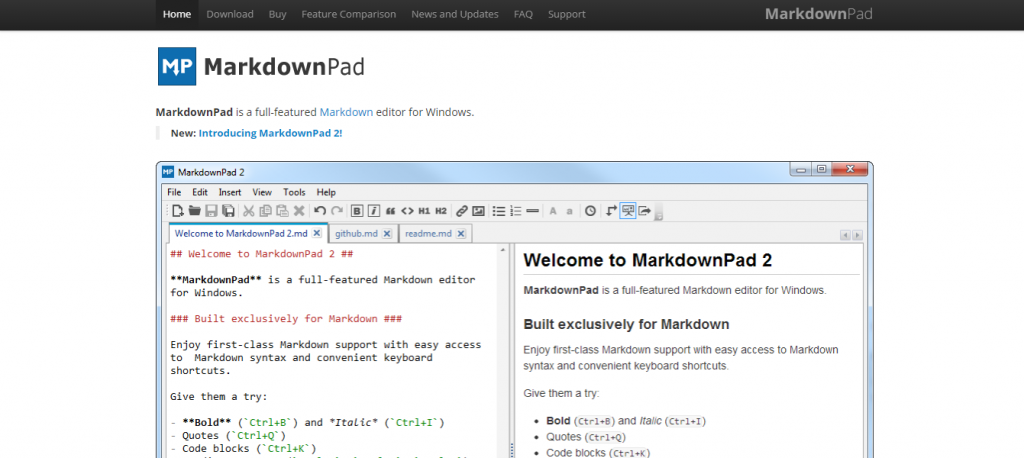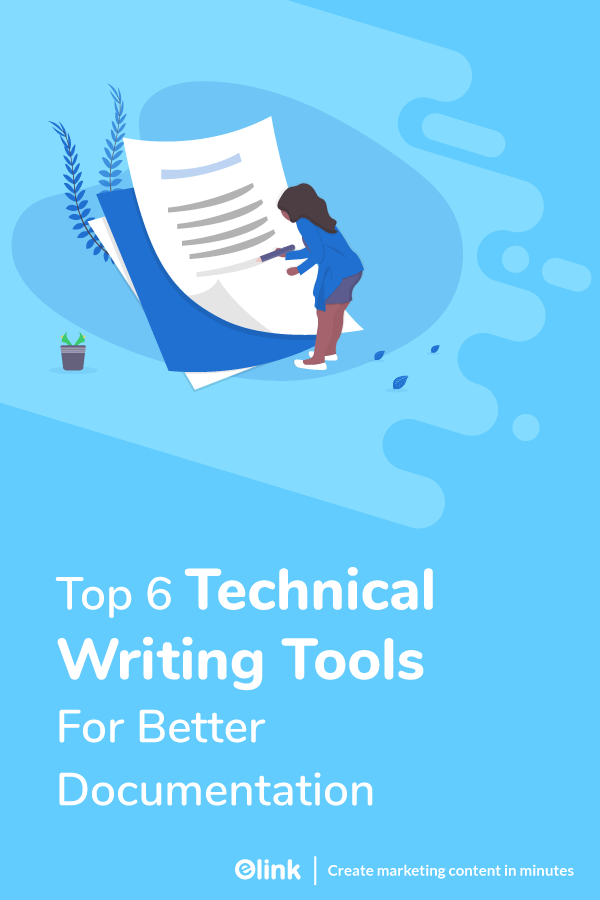One of the puzzling parts about technical writing is not the definitions or steps, it’s documenting it! Most writers working in hi-tech industries often put off technical documentation as they find it to be complex, time-consuming, or straight-up-boring!
However, if you dive deep into it, you will notice that it’s more than just documenting information! Technical writing starts with gaining an in-depth understanding of the product or service, staying abreast of its functionalities, and analyzing its demand in the market to know your target customers.
Seems challenging? Well, to be honest, it is!
Being a technical writer can be a tedious job! You have to pen down every technical detail, make sure that your content doesn’t look monotonous, and keep it crisp. To ensure a streamlined process that involves negligible mistakes, we have curated a list of the best technical writing tools that will help you generate top-notch documents!
What is Technical Writing?
Before learning about the top tools for technical writing, let’s get the definition right. Technical writing is the skill of explaining how to use a particular technology to a non-expert user through clear communication. In other words, technical writing is defined as simplifying complex information in an easy-to-understand format!
Technical writers collaboratively work with graphic designers, editors, illustrators, document specialists, content managers, instructional designers, and analysts to produce a stellar variety of technical documentation, including:
- Knowledgebase articles
- Policy documents
- Simulations
- Online and embedded help
- Training manuals, and much more!
Why is Technical Writing Important?
When working in high-tech environments, including those that involve software applications, operating industrial equipment, or consumer products, you need to make sure that complex topics are simplified for your target audience. That’s where technical writing comes in handy! Quality technical writing can minimize misinterpretation and prevent the risk of human errors.
Good documentation also results in useful, relevant, and accurate information to allow a set of actions from the audience in pursuit of a defined goal. The goal may be to safely consume packaged food, comply with a law, coach a sports team, or analyze a product catalog. If the action requires skill or expertise to perform, then technical writing is a necessary component.
Now that you can see how helpful technical writing can be, how do you choose which is the best technical writing tool for you? Here’s a list of the best 6 tools, with their functionalities, that will help you find the perfect fit.
List of Top 6 Technical Writing Tools for better Documentation:
Technical writing tools have come a long way since the days of using Notepad, boring Microsoft Word, or Google Docs. There’s a whole new age of tools and software out there that make the process of technical documentation dynamic and fun. Let’s hop into the list of best technical writing tools in 2020!
- Bit.ai
- Adobe FrameMaker
- ProProfs Knowledge Base
- Snagit
- Markdown Editor
- Whatfix
1. Bit.ai

Technical writers need a robust solution that will help them save time, minimize efforts, and empower users’ understanding of the products through crisp documentation– How about a solution like Bit!
Bit.ai is new-age documentation and knowledge management tool that provides a common workplace for technical writers to collaborate, document, track and share their knowledge, brainstorm ideas, store digital assets, and innovate together. They can interlink Bit documents inside of your workspace with Bit’s wiki feature for both- internal use and external sharing.
The best part is that this knowledge is safely secured in your workspaces and can be shared (or kept private) with anyone in your organization or the public!
Unlike your standard Notepad, MS Word, and Google Docs, Bit documents are interactive. This means, whether your team is creating technical documentation, training manuals, technical specs sheet, best practices, product catalogs, etc., they can easily add code blocks, training videos, and presentations directly into a Bit document within seconds.
Once you are done documenting, you can simply export them as PDFs, Markdown, and much more. Bit’s sleek, minimal, and distraction-free editor makes it a great tool for technical writing.
Features:
- Markdown editor support
- Content management capabilities
- Real-time team collaboration
- 100+ Rich media integrations
- Document tracking
- Wiki/interlinking documents
Pricing:
- Offers a free plan
- Pro plan starts at $8
Read more: Online Education Tools For Modern Teachers
2. Adobe FrameMaker

If you are worried about writing content and re-using the existing content (like single-source writing) then you can consider Adobe FrameMaker as an option for your technical writing!
Adobe FrameMaker is a sophisticated document processor that suites large industrial standard documentation. It can be used to generate structured documents with an XML framework that’s 100% Darwin Information Typing Architecture (DITA) compliant. FrameMaker is a DITA-friendly technical writing tool with the built-in ability to print a PDF and a great alternative to editors like MS Word.
Additionally, documents created with FrameMaker span over 200+ pages with pre-defined templates in several industrial standard formats – such as financial statements and legal agreements. You can also generate automatic hyperlinks, a list of figures, a table of contents, and a list of tables in just a few clicks.
Features:
- One-click image resizing
- XML file handling
- Multidevice publishing
- Mini table of contents
Pricing:
- Starts at $29.99 per month
- Full version at $999
3. ProProfs Knowledge Base

ProProfs Knowledge Base is an excellent technical writing tool that provides amazing features and smart settings to help you create technical documents that reflect perfection.
This tool is beautifully engineered to meet the demands of businesses all over the globe, it helps you create a company-wide knowledge platform, more like a manual, that can be easily accessed via multiple devices, including mobile phones, tablets, and laptops.
ProProfs offer compelling features, such as MS Word-like editor, Google-like search functionality, workflows, customization options, and more, merged to provide you an ultra-modern experience. It even facilitates minute tasks like adding text to multiple pages at a go, adding your firm’s logo, creating toggle content, etc.
Features:
- Branding features
- Revision history
- Compatibility with multiple devices
- Library of themes, designs, fonts, etc.
Pricing:
- Offers a free plan
- Pro starts at $40
Read more: Must-Have Note-Taking Apps for Students in 2020
4. Snagit

Taking screenshots in technical documentation is not just a process- it’s a compulsion! Without images, it would be extremely difficult to comprehend the content.
Most technical writers enhance their screenshots with various attributes like- frames, arrows, circles, etc. These elements help readers to understand images in a simple and fast!
One such tool that offers a collection of beautiful pre-made elements along with the functionality of taking screenshots is Snagit! Snagit is a powerful screen capture tool targeted towards technical writers that make their documents look consistent and professional!
Features:
- Panoramic scrolling capture
- Captures drop-down menus
- Borders and image effects
- Exports to cloud storage
Pricing:
- Offers a 15-day free trial
- Pro plan starts at $50
5. MarkdownPad

MarkdownPad is one of the most popular Markdown document editors used by technical writers. It provides a lot of customizations like fonts, color schemes, sizes, and layouts. It even has a built-in CSS editor and supports your custom CSS stylesheets.
Users can quickly convert their written text documents into HTML or even export them as PDFs. With quick HTML previews, users can easily see what their documents look like in HTML as they create them.
They can use MarkdownPad to write articles, READMEs, and of course, technical documents. However, the lack of cloud features and the fact that it’s only equipped for Windows can be a bummer for a lot of writers out there.
Features:
- Built-in image uploader
- Auto-save
- Session management
- Configurable automatic updates
Pricing:
- Offers free download
- Pro plan starts at $14.95
6. Whatfix

No one likes to see technical content in the form of a boring, endless document that makes it hard for your audience to resolve their problem. When you are showing technical documentation online, you have to keep away from the lengthy, robotic web pages. Whatfix helps you with that!
This technical writing tool allows you to create compelling guides and help articles, presented in the form of real-time interactive walkthrough elements.
Moreover, Whatfix automatically adapts the help guide based on the device you use. And the same help content can be accessed in other formats – as a video, slideshow, or PDF.
Features:
- Customizable user interface
- User tracking
- Multi-browser compatibility
- Multi-format support- videos, graphics, images, and text
Pricing:
- Get a quote
Wrapping Up!
There you have it peeps! A clear list of best technical writing in the market. The primary purpose of all these tools is to generate quality documentation and provide you with an awesome user interface to keep the process exciting and fun!
Before you start on with any of these technical writing tools, ensure that you analyze the features offered by them. This will help make a better decision when you have to make a purchase.
If you’ve used any of the tools mentioned above or have other suggestions that can make a technical writer’s job more effective, feel free to share your experience in the comments section below or tweet us @elink_io
Further reads:
Best Apps for Teachers To Engage Students
The Best Curation Tool for Educators and Students
Top 9 Knowledge Management Tools







